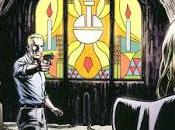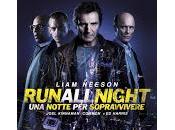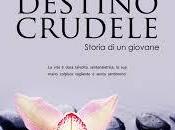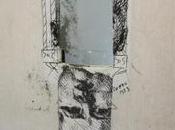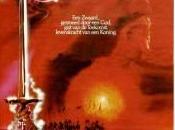Il 22 gennaio del 1901 alle 18,30 spirava, all'età di 81 anni, tenendo tra le mani un crocifisso, la Regina Vittoria.
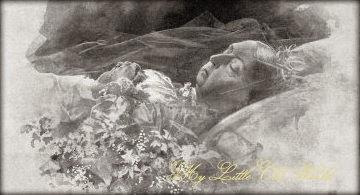
Dopo 63 anni e 7 mesi di glorioso regno ella lasciò questa nostra terra in uno dei luoghi che più amava, Osborne House sull'Isola di Wight, dove aveva trascorso con i suoi cari il precedente Natale ed il Capodanno, in presenza del figlio Edoardo, Principe di Galles ( futuro re Edoardo VII ) e del nipote di maggiore età, Guglielmo II Imperatore di Germania; la sua dipartita non suscitò grande sorpresa in chi le stava accanto poiché la sua salute era da alcuni giorni in lento declino.Christopher Hibbert, in "Queen Victoria: A Personal History", riporta che la regina annotò nel suo diario il primo giorno dell'anno le seguenti parole:"Un altro anno è iniziato ed io mi sento così debole ed indisposta che lo principio tristemente."
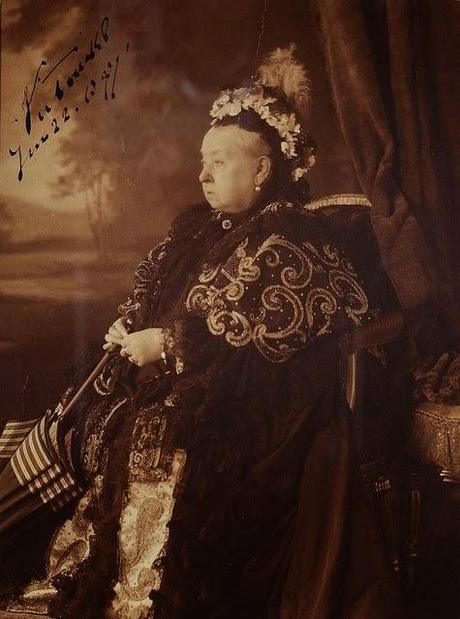
1897, Diamond Jubilee
ed il suo medico, Sir James Reid, riferì il 16 gennaio, che: "La Regina ha trascorso una notte piuttosto turbata, ed era molto assonnata per tutta la mattinata, e poco incline ad alzarsi ... la vidi addormentata nel letto in mattinata, mentre ero piuttosto preoccupato per lei, e le domestiche mi dissero che era troppo assonnata per accorgersi della mia presenza ... mi colpì quanto mi apparve piccola."ragion per cui il giorno seguente egli giunse alla conclusione che la regina aveva avuto un ictus ed il 19 di gennaio i suoi figli vennero riconvocati ad Osborne House; suo nipote, il Kaiser, lasciò la Germania non appena seppe della salute in declino della nonna e si aggregò al padre, il Principe di Galles.
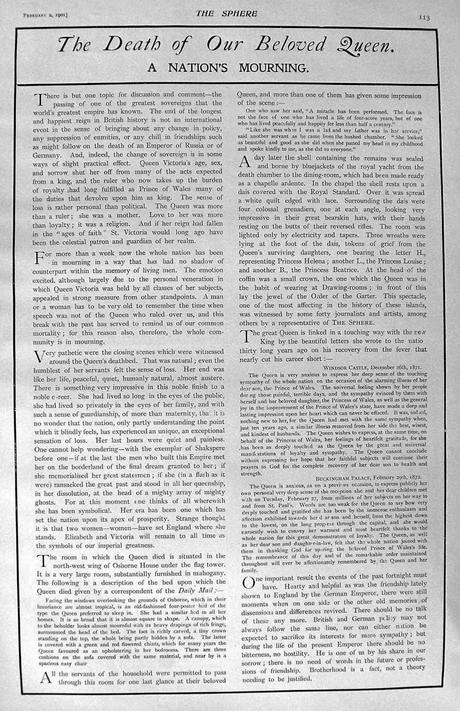
Impensabile che essendo una persona molto puntigliosa non avesse lasciato disposizioni in merito alle onoranze funebri che desiderava e alla modalità in cui avrebbero dovuto svolgersi ed infatti da anni aveva allertato le guardarobiere poiché badassero ai suoi abiti affinché fossero sempre pronti per l'eventuale utilizzo, e chi l'avrebbe dovuta vestire avrebbe dovuto provvedere ad inserire nella cassa che avrebbe accolto le sue spoglie una lunga serie di monili ed oggetti personali: un calco di gesso della mano del suo consorte principe Albert scomparso 40 anni prima, la sua vestaglia ed il suo mantello, ricamato dalla defunta principessa Alice, la figlia che aveva perso nel 1878, alcune fotografie, alcuni scialli, il velo di pizzo indossato il giorno del suo matrimonio, una fotografia di John Brown ed una ciocca dei suoi capelli che voleva le fosse messa nella mano destra. Da allora prese sempre più corpo il sospetto che i due fossero legati non solo che da una profonda amicizia, ma che si fossero addirittura maritati in segreto, visto che ella fu sepolta con al dito la fede nuziale della mamma del suo ' fedele scudiero scozzese ' divenuto suo punto di riferimento dal momento del principio della sua vedovanza in poi, fino al suo decesso avvenuto all'età di 53 anni presso Windsor Castle. ( Un articolo apparso il maggio 2008 sul "The Daily Mail" insinuava esplicitamente che un archivista, lavorando tra le carte private della Regina Victoria, avesse trovato il certificato di questo presunto matrimonio, ma quando l'archivista lo mostrò alla Regina Madre, lei lo prese e lo gettò nel fuoco senza profferire verbo. )Quando Sir James Reid, che della regina non solo era medico ma anche fidato amico, si fu sincerato che tutto fosse predisposto nella bara come desiderato dalla defunta, e che le fossero state tagliate le ciocche di capelli da mettere nei ciondoli, come voleva la tradizione, per i famigliari, provvedette a coprire con un mazzo di fiori la mano che recava la fotografia di John Brown, affinché non fosse visibile a coloro i quali desideravano vedere un'ultima volta Sua Maestà prima che la bara venisse chiusa; quindi la salma, circondata da una coltre di raso bianco,
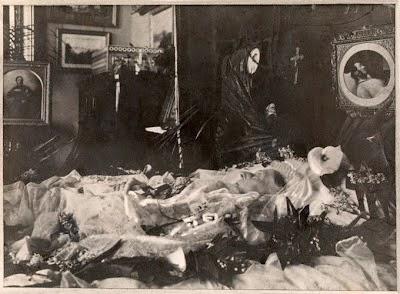
venne posta nella sala da pranzo di Osborne House da alcuni marinai che provvedettero a vegliarla fino a che non fosse trasportata a Londra. Successivamente la bara venne chiusa e coperta da un telo di velluto porpora e da un capo in pelliccia di ermellino su cui venne adagiata la corona che per tanto tempo le aveva ornato il capo.
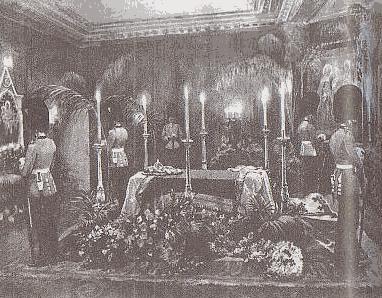
In qualità di capo delle forze armate la Regina volle un funerale militare in piena regola, ma un funerale non nero, bensì bianco e con un telo bianco, perciò, la bara venne coperta prima di essere il 1 di febbraio fatta salire sullo yacht Alberta per raggiungere Porthampton; da lì proseguì in treno fino a Londra dove l'attendeva una lunga processione per le strade della città su di un carro da cannone, trainato dall'Artiglieria Reale Britannica a cavallo, cui, nel salire la collina che conduce al castello di Windsor, dovettero subentrare marinai muniti di corde causa la rottura del bilancino del carro;
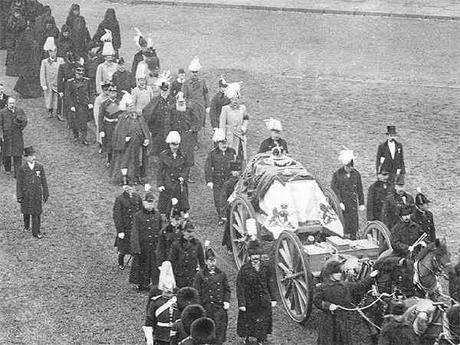
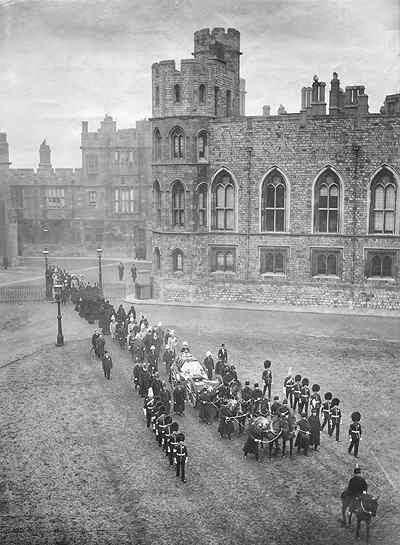
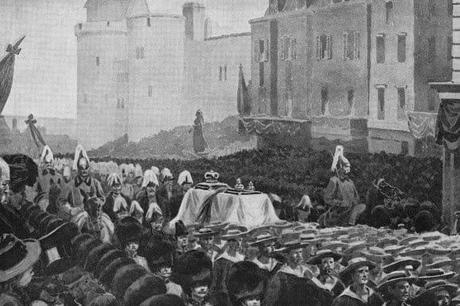
Una folla silenziosa e dalle proporzioni inenarrabili accorse per le strade della capitale per porgere l'estremo saluto alla Regina del Popolo, sia il giorno dell'arrivo a Londra, il 2 di febbraio, che quello del funerale il giorno 4, quando la bara fu trasportata dall'Albert Memorial Chapel in St George’s Chapel, Windsor, al Mausoleum, accompagnata dalla sua famiglia.Qui si svolse quella che Christopher Hibbert nel suo testo definisce la più semplice ed al contempo la più imponente delle cerimonie cui egli mai prese parte; posata la bara sull'altare e chiusi i cancelli, essa venne benedetta e a turno tutti i membri della famiglia vi si accostarono, in ginocchio, sfilando ad uno ad uno, partendo da re Edoardo VII, la Regina sua consorte, il piccolo principe Edward, futuro Duca di Windsor, che, irrigidito dalla forte emozione, non riusciva ad inginocchiarsi e fu perciò preso per mano dal padre e fatto dolcemente inginocchiare accanto a sé.
Così si concluse un'epoca, quella vittoriana, che segnò importanti progressi in campo agricolo ed industriale, scientifico e militare, che diede impulso alle comunicazioni e ai collegamenti, favorì l'espansione dell'impero Britannico e lo sviluppo di una classe media colta; così si concluse un'epoca anche per la Casa di Hannover, poiché il suo erede, Edoardo VII sceglierà di essere il primo monarca britannico della casa di Sassonia- Coburgo-Gotha ed il primo Windsor (1917); così si concluse un'epoca, con il porre la bara della Regina Victoria a fianco di quella del principe Albert e con la posa su di essa di una sua immagine scolpita su pietra bianca, opera di Baron Marochetti che a suo tempo aveva scolpito l'effigie del Principe Albert: da allora i loro volti sono tornati a volgersi l'uno verso l'altro.
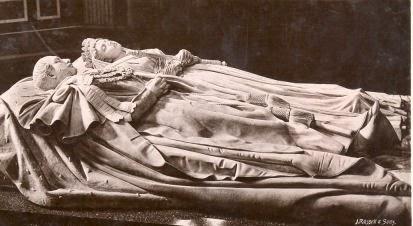
E come, guardando questa immagine, come non pensare al "Romeo and Juliet" di Shakespeare ...
Ma parla ... Oh, dì ancora qualcosa, angelo splendente, così glorioso in questa notte, lassù, sopra la mia testa, come un messaggero alato del cielo quando abbaglia gli occhi stupiti dei mortali, che si piegano all'indietro per guardarlo varcare le nubi che si gonfiano pigre, e alzare le vele nel grembo dell'aria.
(Romeo: atto II, scena II)
Grazie ancora, come sempre, a ciascuno di voi, mi congedo non prima di avervi augurato ogni bene.A presto ♥
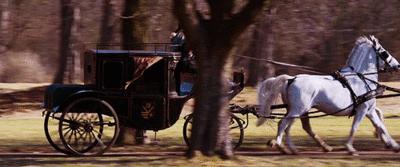

Bibliographyc sources:
Christopher Hibbert, “Queen Victoria: A Personal History”, Da Capo Press, 2001THE VICTORIA FILES -The REAL TRUTH about Queen Victoria http://www.victoriafiles.com/rip-queen-victoria/3035/ http://www.victoriafiles.com/queen-victorias-funeral/3042/

On January 22nd, 1901 at half past six p.m., at the age of 81, Queen Victoria died, holding a crucifix in her hands.
- picture 1
After 63 years and 7 months of glorious kingdom she left this earth in one of the places she loved most, Osborne House on the Isle of Wight, where she had spent with her beloved ones the previous Christmas and the New Year Day, in presence of her son Edward, Prince of Wales (later King Edward VII) and her older grandson, Emperor Wilhelm II of Germany; her departure wasn't a reason of surprise in those who stood beside her because her health was for a few days in slow decline.Christopher Hibbert, in "Queen Victoria: A Personal History", reports that the queen noted in her diary on the first day of the year the following words:“Another year begun and I am feeling so weak and unwell that I enter upon it sadly.”
- picture 2 - 1897, Diamond Jubilee
and her doctor, Sir James Reid, reported on January 16th that:“The Queen had a rather disturbed night, and was very drowsy all forenoon, and disinclined to get up…I saw her asleep in bed in the forenoon, as I was rather anxious about her, and the maids said she was too drowsy to notice me…I was struck by how small she appeared.”that's why the next day he came to the conclusion that the Queen had had a stroke and on January 19th her relatives were called back at Osborne House; her nephew, the Kaiser, left Germany as soon as he learned of the declining health of her grandmother and joined his father, the Prince of Wales.
- picture 3
Unthinkable that, being a very meticulous person, she had left no instructions about the funeral she wanted and the way in which she would have it to be taken and for years, in fact, she gave her maids instructions to make arrangements about her clothes which had to be always ready for this use, and who would have dress her had to include inside the casket that would have welcomed her remains a long amount of jewelry and personal items: a plaster cast of the hand of her husband Prince Albert died 40 years before, his robe and his cloak, embroidered by Princess Alice, the daughter she lost in 1878, some photographs, some shawls, the lace veil worn on the day of her wedding, a photograph of John Brown and a lock of his hair that she wanted to be put in her right hand. Since then took increasingly concreteness the suspect that the two were linked not only by a deep friendship, but that they were even secretly married, also because she was buried having on her finger the wedding ring of the mother of his 'faithful Scottish squire', become her point of reference since the beginning of her widowhood, until his death occurred at the age of 53 years at Windsor Castle. (An article from May 2008 published on "The Daily Mail" insinuated explicitly that an archivist, working among Queen Victoria's private papers, had found the certificate of this presumed marriage, but when the clerk showed it to the Queen Mother, she took it and threw it into the fire without uttering a word.)When Sir James Reid, that of the Queen wasn't only a doctor but also a trusted friend, was made sure that everything was prepared in the coffin as desired by the deceased, and that they had been cut the strands of her hair to put in the pendants for the relatives, as the tradition required, he arranged for covering with a bunch of flowers the hand that held John Brown's photograph, so that it wasn't visible to those who wanted to see Her Majesty one last time before the coffin was closed; then the body, surrounded by a pall of white satin,
- picture 4
was placed in the dining room of Osborne House by some sailors who watched over it until it was transported to London.Later the coffin was closed and covered with a cloth of purple velvet and a leader in ermine fur on which was placed the crown that for so long had adorned her head.
- picture 5
As chief of the armed forces the Queen wanted a full-blown military funeral, not a black funeral, but a white one and with a white cloth, therefore, the coffin was covered before on February 1st it was charged on the yacht Alberta for reaching Porthampton; from there she went to London by train where it was waiting for her a long procession through the streets of the city on a gun carriage, driven by the Royal Horse Artillery which, while going up the hill leading to Windsor Castle, had to surrender and give way to the sailors, equipped with ropes, to drive the carriage instead of it because of thebreaking of the splinter bar of that old artillery piece;
- picture 6
- picture 7
- picture 8
A silent crowd by unspeakable proportions rushed on the streets of the capital to pay its last respect to the Queen of the People, both on the day of her arrival to London, on February 2nd, and on that of her funeral the 4th, when the coffin was transported from the Albert Memorial Chapel in St George's Chapel, Windsor, to the Mausoleum, accompanied by her family.There took place what Christopher Hibbert in his text defines the most simple and at the same time the most impressive ceremony which he had ever took part; placed the coffin on the altar and closed the gates, it was blessed and, in turn, all the members of the Royal family came to her, kneeling, one by one, starting with King Edward VII, her consort the Queen, the little Prince Edward, future Duke of Windsor, who, stiffened by a strong emotion, unable to kneel, was so taken by hand by his father and made to kneel gently beside him.
Thus ended an era, the Victorian era, which marked significant progress in the agricultural and industrial field, in the scientific and military ones, which gave impetus to the communications and connections, favored the expansion of the British Empire and the development of an educated middle class; so ended an era for the House of Hannover, as her heir, Edward VII, will choose to be the first British monarch of the House of Saxe-Coburg-Gotha and the first Windsor (1917); so ended an era, with the coffin of the Queen Victoria put beside that of Prince Albert and with laying on it her carved image of white stone, work of Baron Marochetti that had once carved the effigy of Prince Albert too and since then their faces are back the one facing toward the other.
- picture 9
And how, looking at this image, not to think of "Romeo and Juliet" by Shakespeare ...
She speaks:O, speak again, bright angel! for thou artAs glorious to this night, being o'er my headAs is a winged messenger of heavenUnto the white-upturned wondering eyesOf mortals that fall back to gaze on himWhen he bestrides the lazy-pacing cloudsAnd sails upon the bosom of the air.
(Romeo: Act II, Scene II)
See you soon ♥
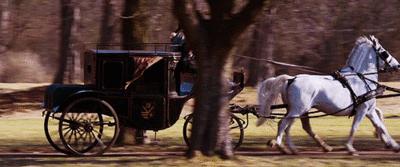

Bibliographyc sources:
Christopher Hibbert, “Queen Victoria: A Personal History”, Da Capo Press, 2001THE VICTORIA FILES -The REAL TRUTH about Queen Victoria http://www.victoriafiles.com/rip-queen-victoria/3035/ http://www.victoriafiles.com/queen-victorias-funeral/3042/
